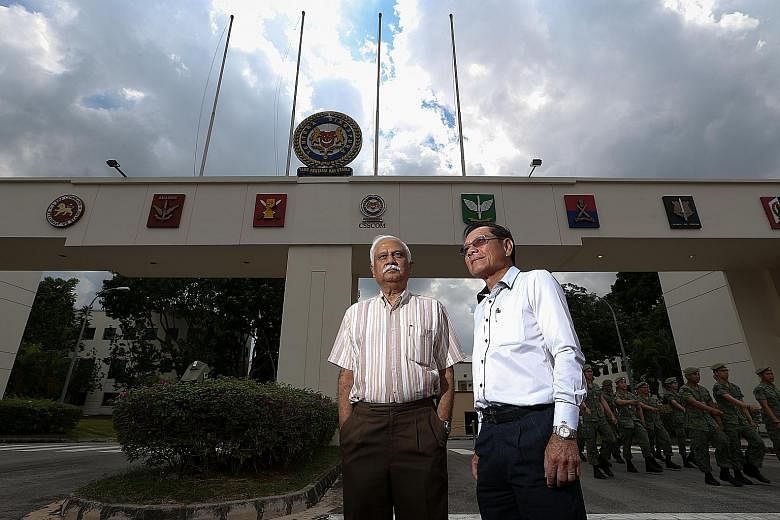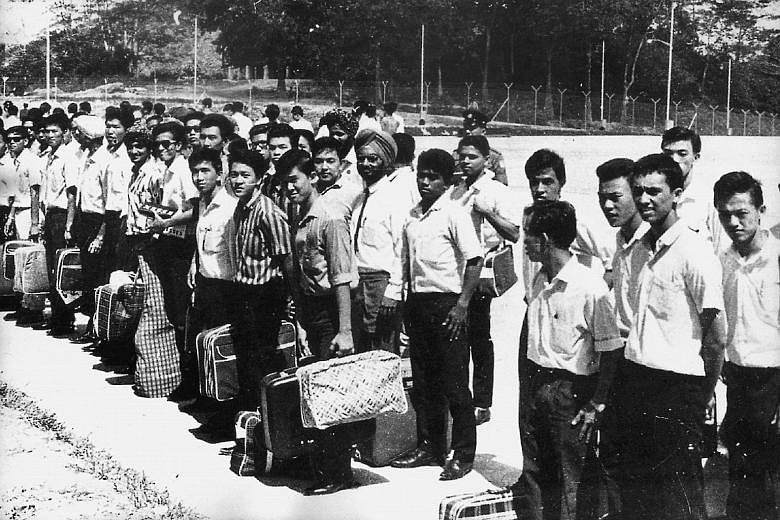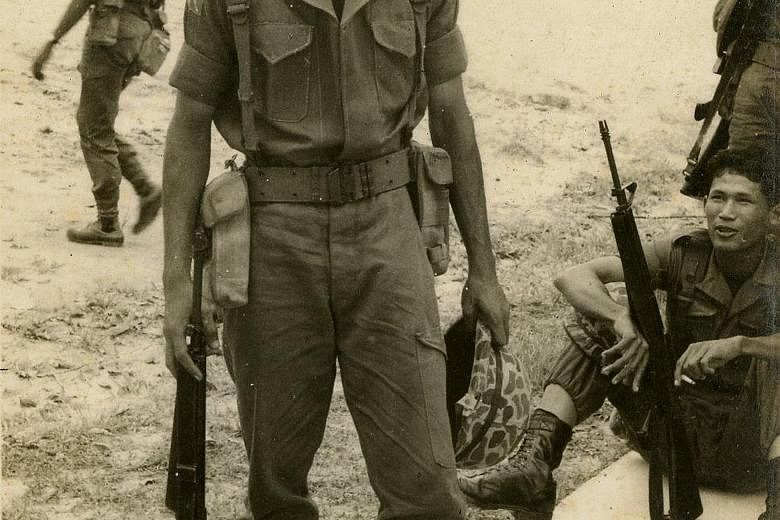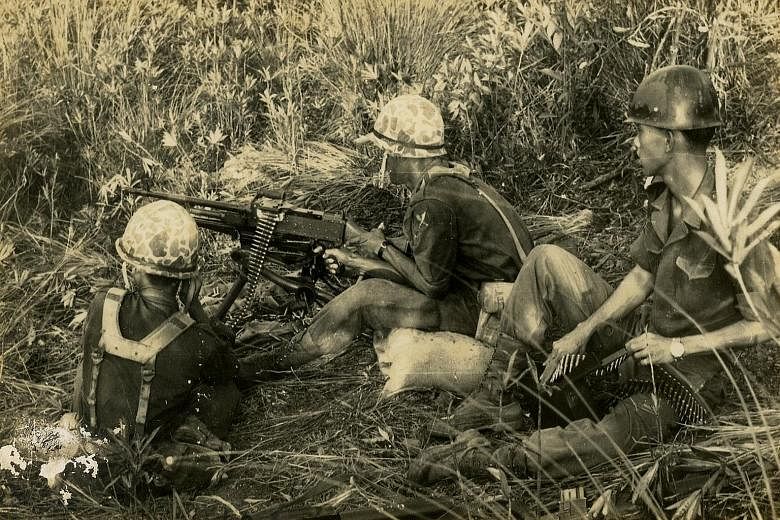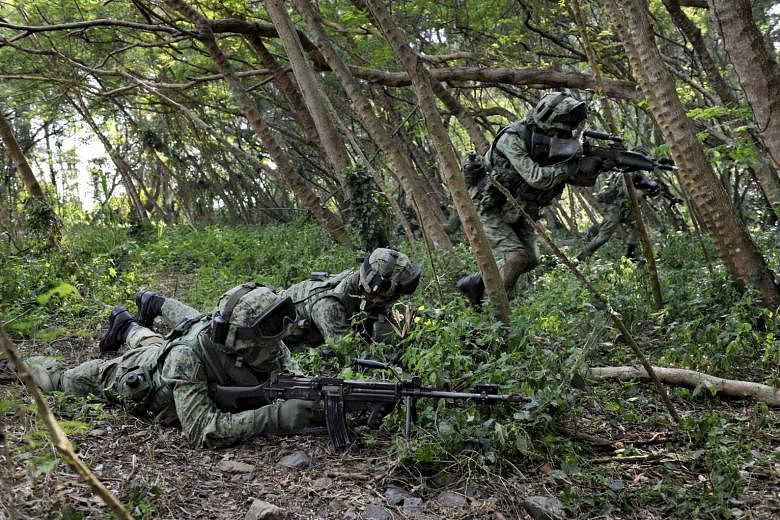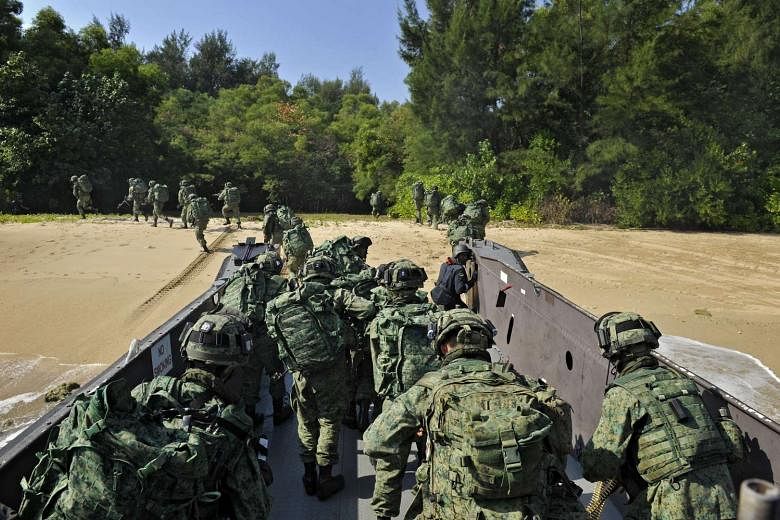They are a group of lion-hearted military veterans who have been through the rough and tough, who proudly describe themselves as "one of a kind".
Singapore's first batch of 300 officer cadets had to overcome the shakiest of starts on the road to becoming commissioned officers, at a time when Singapore was still a new state grappling to form a credible army. It was June 1966 and just days into the officer cadet training. Halfway through "A" company's five-mile (8km) route march, commanders asked who wanted to drop out. Half the 150 recruits - the other 150 were in "B" company and were not on the route march - wanted to.
"The commanders panicked," said retired Colonel Ramachandran Menon, 75, who has chronicled the history of the first batch of officer cadets at the Singapore Armed Forces Training Institute (Safti) in his book, One Of A Kind.
Mr Menon, then a 25-year-old literature and geography teacher, was among 3,000 people who answered an advertisement to be Singapore's pioneer career soldiers.
Many who applied had completed only their O levels, and were attracted by monthly pay of at least $300 - more than the average salary of a civil servant.
-
NATIONAL DEFENCE MILESTONES
-
• 1965: Ministry of the Interior and Defence (MID) is formed under Dr Goh Keng Swee; Singapore Armed Forces (SAF) formed, Singapore Volunteer Corps renamed People's Defence Force
• 1966: Singapore Naval Volunteer Force created, with just three ships; first officer cadets start training
• 1967: National service starts
• 1968: Singapore Air Defence Command formed
• 1970: MID splits into two ministries: Ministry of Defence and Ministry of Home Affairs
• 1975: Naval Volunteer Force becomes a regular force, the Republic of Singapore Navy;• Air Defence Command is now Republic of Singapore Air Force
• 1989: Mindef moves from Tanglin Village on Dempsey Hill to its current Bukit Gombak location
• 1999: Singapore-made SAR 21 rifle introduced
• 2004: SAF embarks on Third Generation transformation; full-time NS cut from 2½ years to two years as forces rely more on technology; SAF embarks on Operation Flying Eagle, its biggest disaster- relief mission, after Boxing Day Tsunami
• 2006: Call-ups for annual NS in-camp training cut from 13 to 10 years
• 2010: SAF overhauls its career schemes for commissioned officers and warrant officers and specialists.
• 2012: SAF celebrates 45 years of NS
• 2014: Committee to Strengthen National Service's recommendations give NSmen more time to pass Individual Physical Proficiency Test; set up SAF Volunteer Corps for women, first-generation PRs, new citizens
• 2015: First 226 volunteers complete basic training
After a battery of physical and IQ tests, only 300 were shortlisted.
Even so, not all could hack it. With many clamouring to resign, the situation was so serious that the Permanent Secretary of the Ministry of Interior and Defence had to personally urge them to stay on.
Forty-six threw in the towel. "Many of us signed up knowing and expecting a regimental lifestyle and tough training, but there was still a culture shock," said Mr Menon, who underwent basic and section leader training.
Along with 116 others, he made the cut after year-long training to become the first cohort of commissioned officers in 1967 trained in an indigenous Singapore Armed Forces (SAF). The batch produced five generals, including former defence chief Ng Jui Ping, 66.
These men, who were then in their late teens and early 20s, would attest to the rigorous training at Pasir Laba Camp in Jurong.
For the smallest of mistakes, they were subjected to punishments like going on all fours and doing the duck walk up the 61m-high Peng Kang Hill. Retired Lieutenant-Colonel Swee Boon Chai, now 69, who was then a 19-year-old who had served in the Volunteer Corps before signing on, said: "You felt so helpless after training to the point you would even curse the day you were born."
One of the trainers, retired Lieutenant-Colonel Daljeet Singh, 75, was on the front lines during Konfrontasi from 1963 to 1966 when Indonesia opposed the newly formed Malaysia and had to mount patrols in the Sabah jungles. He explained: "If training is not tough, when you are in operation, the fear of dying is so great it saps your energy. We had to ensure that they were physically and mentally fit ."
Just a week before the officer cadet course, the trainers were being taught by Israeli advisers - in makeshift camp facilities in Jurong Town Primary School - on how to instruct.
Building up the armed forces was not easy. Singapore's defence assets consisted of two infantry battalions, two lightly armed patrol boats and no air force to speak of.
Singapore was not that rich either, and could not afford a fully professional army.
Hence, Singapore's founding leaders chose to go down the conscription route in 1967.
Lieutenant-General (Retired) Choo, Singapore's first chief of defence force, recalled in an interview with DSO National Laboratories: "We were so busy just trying to raise units, convincing parents that national service was okay, taking in soldiers who were mostly ill-equipped, ill-motivated and ill-educated." Since then, more than 900,000 young men have been enlisted.
The country's first defence minister, Dr Goh Keng Swee, had said Singapore needed a technology edge to build up its arsenal and amplify the firepower of a small armed forces.
That is certainly true today, as the SAF has gone on to become a third-generation fighting force that can deliver sharper firepower, even with fewer people, by the smart use of technology.
And this sophisticated fighting force owes much to the groundwork laid by its tough pioneers.
